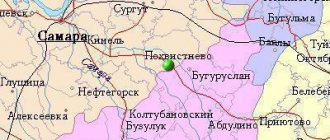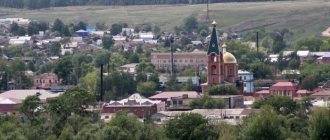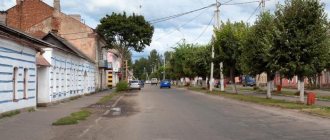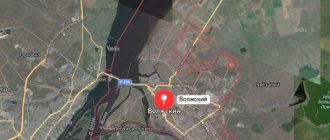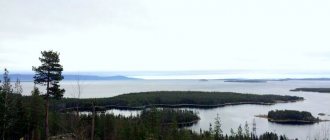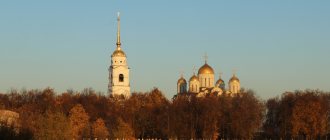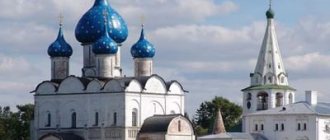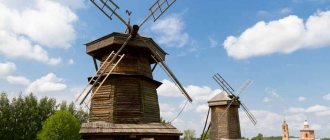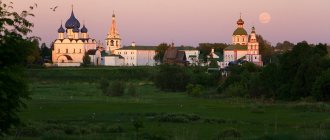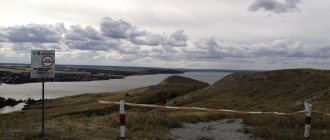Excursions in Suzdal | Apartments in Suzdal
Suzdal is one of the most beautiful and very interesting cities of the Golden Ring. It stretches along both banks of the Kamenka River (a tributary of the Nerl River) among picturesque meadows called Suzdal Opolye. The river twists and turns, creating so many photo opportunities that you could spend more than one day here!
The city was founded in the 10th century; some objects from the thirteenth century and later have survived to this day. This is the center of the Rostov-Suzdal principality - and therefore the cradle of our history.
In this article we will look at what to see in Suzdal first, how to get there and where to travel around.
History of Suzdal
The first mention of Suzdal dates back to 1024: Yaroslav the Wise and his retinue came to the city from Novgorod the Great to suppress a peasant uprising. The fortress was built a little later - in the 11th-12th centuries - in a bend of the Kamenka River, where the river served as protection for the fortification from the west, and an artificial ditch from the east. The earthen ramparts have partially survived to this day, becoming the oldest landmark of the city.
In the 11th century, Suzdal became the patrimony of the Kyiv prince Vladimir Monomoh. The first building in the Kremlin was the Cathedral of the Assumption of the Mother of God, built by craftsmen who arrived from Kyiv at the invitation of Vladimir Monomakh. In its place, two centuries later, the majestic Cathedral of the Nativity of the Virgin Mary will be erected. And the first monastery in Suzdal - in honor of Dmitry of Thessalonica - was built in the 11th century to the west of the fortress.
Suzdal is a unique city: the historical layout of streets has been preserved here. To the east of the Kremlin there was a posad - a settlement on the territory of which artisans and traders lived.
In the 12th century, Suzdal came under the control of Yuri Dolgoruky, the son of Vladimir Monomakh and the first prince of the Rostov-Suzdal land. Under him, many churches appeared in the city - and Suzdal became a spiritual center. The political importance of the city is also increasing. Later, with the coming to power of Prince Andrei, the son of Yuri Dolgoruky, Suzdal loses its primacy, losing to Vladimir, and becomes part of the Vladimir-Suzdal principality. And in the 13th century it became its capital.
In 1238 the city was taken and destroyed by the Mongol-Tatars. Most of the city was destroyed by fire, and the population was taken prisoner. Only a few escaped by hiding in the Deposition of Robe Monastery, which survived the fires.
In the 14th century, Suzdal became part of the newly formed Suzdal-Nizhny Novgorod Grand Duchy and became one of its main centers. At this time, two largest monasteries were being built in the city - Spassky and Pokrovsky, construction on the territory of which continued until the 18th century. During these years, Suzdal flourished, turning into a rich and populous city, whose residents were famous for their “leisure in arts and crafts,” as stated in the chronicle.
In the second half of the 14th century, the Suzdal Kremlin became the center of the diocese - with a residence in the Kremlin. In particular, stone chambers were built for the needs of the bishops, which are considered a monument of civil architecture of the 16th-17th centuries. At this time, the monasteries located in Suzdal grew richer and expanded, including through the use of peasant labor, as well as numerous donations from boyars and princes.
At the end of the 15th century, Suzdal, having lost its independence, became part of the Moscow state. Both church and secular life in the city freezes: the city is located outside the busy trade routes of that time.
In the second half of the 16th century, Suzdal was taken into oprichnina by Ivan the Terrible. The Time of Troubles threw the city back several centuries. In the 17th century, Suzdal was plundered twice by Polish troops, as well as by Crimean Tatars. In addition, the city survived fires and epidemics. After one of the devastating fires, some of the city churches burned to the ground - and in their place stone churches were built, which have survived to this day.
At the end of the 18th century, Suzdal became a quiet district town in the Vladimir province. The railway leading from Moscow to Nizhny Novgorod bypasses Suzdal, thus allowing it to retain its ancient Russian charm.
How to get there
All travel to Suzdal is made by bus (there is no railway here).
Moscow — Suzdal
There are direct buses from Moscow to Suzdal; travel time is approximately 4 hours (depending on the number of stops). Bus schedule
Vladimir — Suzdal
It’s most logical to start from Vladimir, and then the journey will be faster: only 50 minutes, see the schedule here .
Ivanovo — Suzdal
If you are driving along the Golden Ring from Sergiev Posad, then you will go to Suzdal from Ivanovo. It’s also convenient, there are many flights, travel time is 1 hour 10 minutes. Schedule
From other cities there will be flights with transfers through these three cities. Choose what is most convenient for you.
What to see in Suzdal
The main architectural monuments of the city are the Suzdal Kremlin, Spaso-Evfimiev Monastery, Pokrovsky Convent and the Deposition of Robe Monastery. The last pre-Mongol monument has been preserved in Suzdal - the Cathedral of the Nativity of the Virgin Mary, built in 1225. It’s worth a look inside if only for the unique relic - the “golden gate”, which has come down to us almost untouched. On the southern side of the temple scenes from the Old Testament are depicted, and on the western side - from the New.
In the Suzdal Museum of Wooden Architecture and Peasant Life, founded on the site of the now no longer preserved ancient Dimitrievsky Monastery, you can see unique examples of wooden architecture. There are huts, churches, and outbuildings of the 18th-19th centuries. And the wax museum contains more than 150 exhibits - from Alexander Nevsky to Nikolai Gogol.
The legendary Suzdal mead deserves special mention - a tart, bitter drink. You can taste the most unusual varieties - with hops, mint, spices, horseradish, linden blossom, juniper berries and pepper, anise, clover and basil - in the tasting room located in the Trade Rows. All mead presented here is industrially produced. And if you want a more authentic drink, buy homemade mead - at the stalls and in the tents on the Trade Square.
Ride a snowmobile
Or, more simply, on a sled. When the Kamenka River freezes completely, people ride on snowmobiles.
And everyone nostalgic for a summer holiday at sea is offered to ride a banana, which is tied directly to a snowmobile. Well, if this option for active recreation does not appeal to you, you can ride down the mountain on a sled or on an ice skate - the earthen ramparts surrounding the Kremlin are great for this.
Sights of Suzdal
Suzdal Kremlin
Founded in the 10th century in a bend of the Kamenka River, the Suzdal Kremlin is a unique example of ancient Russian architecture. The dominant feature of the complex is the white stone Nativity Cathedral, built in the first half of the 13th century. The cathedral has not reached us in its original form: in 1445, after a raid by the Kazan Khan, the temple burned down and collapsed - and was restored only in the 16th century. Over the next few centuries, the cathedral was partially rebuilt. Inside, the Golden Gate is preserved - a unique example of decorative and applied art by Suzdal masters, as well as fragments of frescoes from the first half of the 13th century. In the necropolis of the Cathedral of the Nativity of the Virgin Mary rest members of the boyar and princely families - in particular, the Shuiskys, as well as the sons of Yuri Dolgoruky - Ivan and Svyatoslav.
Also preserved on the territory of the Suzdal Kremlin are the Cross Chamber, the bell tower of the 17th century, the wooden St. Nicholas Church of the 18th century, transported from the village of Glotova in the Yuryev-Polsky region, the bishop's chambers of the 15th-18th centuries and the only Jordan canopy of the 17th century preserved in Russia - a decorative canopy over a carved in the ice Epiphany ice hole. In the buildings of the bishop's courtyard there is a museum, the exhibition of which includes a collection of icons of the 15th-17th centuries, brought from monasteries and churches of the Vladimir region.
There is a children's museum on the territory of the Kremlin. The exhibition is interactive: kids will be able to find out how the townspeople lived at the turn of the 19th - 20th centuries, attend a lesson at the zemstvo school, try standing with their knees on peas and walk around the noisy Euphrosyne Fair.
Deposition of the Robe Convent in Suzdal
Author: A.Savin (Wikimedia Commons · WikiPhotoSpace)
One of the oldest monasteries in Rus' was founded at the beginning of the 13th century. On the territory of the monastery, buildings from the 16th-19th centuries have been preserved: the Deposition of Robe Cathedral, decorated with stone carvings and glazed tiles, the Holy Gates - a masterpiece of Suzdal architecture, the Venerable Bell Tower and the Sretenskaya Refectory Church.
Now the monastery is under restoration. Nevertheless, it’s worth a visit here if only for the best observation deck in the city, which offers picturesque views of the historical center of Suzdal - with its numerous monasteries and church domes. It is located on the 72-meter bell tower, just below the bell ringer's platform. You can go upstairs on weekdays by contacting the abbess of the monastery and asking for the keys. And on Fridays, Saturdays and Sundays, a monastery employee is on duty at the entrance to the bell tower, who allows tourists to go up for an additional fee. The steps are quite steep - be careful.
Spaso-Evfimiev Monastery in Suzdal
Photo: Wikimedia Commons · WikiPhotoSpace
The Spaso-Evfimiev Monastery, founded in the middle of the 14th century, is a unique monument of Russian architecture. Initially, all the buildings on the territory of the monastery were wooden, but they have not survived to this day. The dominant feature of the complex is the monumental Transfiguration Cathedral, built in the 16th century. Inside the white stone church, frescoes from the 16th century have been preserved, as well as paintings by Gury Nikitin and Sila Savin, the largest icon painters of the 17th century.
The architectural complex of the monastery includes the Assumption Church of the 16th century; the archimandrite's chambers, in which the exhibitions “The Book of Six Centuries” and “Russian Icons of the 18th - Early 20th Centuries” are open; St. Nicholas Hospital Church of the 17th century; Church of the Annunciation, which houses the exhibition “Dmitry Pozharsky - National Hero of Russia”; fraternal cell building with the exhibition “History of Suzdal monasteries”; belfry, as well as the towers of the monastery. The Spaso-Evfimiev Monastery complex is included in the UNESCO World Heritage List.
Of particular interest is the prison building, where in 1766, by decree of Catherine II, a prison was organized for “mad convicts,” that is, political criminals. Suzdal prison was considered the most cruel on the territory of the Russian Empire. In the 1920s and 1930s, the prison was converted first into a political detention center and later into a special purpose prison. In the 1940s, officers and generals of the Third Reich, in particular Friedrich Paulus, were kept here. Nowadays the exhibition “Suzdal Prison” is dedicated to these chapters in the history of the monastery.
Pokrovsky Convent in Suzdal
The monastery was founded in the 14th century, but the first wooden buildings have not survived. In the 16th-17th centuries, the Intercession Monastery was considered one of the largest in Rus': representatives of noble families who were tonsured as nuns were sent here. Among the prisoners of the monastery are the wife of Ivan IV Anna Vasilchikova, the wife of Vasily III Solomonia Saburova, the wife of Peter I Evdokia Lopukhina, the daughter of Boris Godunov Ksenia and many others.
The ascetic Intercession Cathedral is the main church of the monastery. It was built at the beginning of the 16th century. Also preserved on the territory of the monastery are the Holy Gates, a hipped bell tower, the Annunciation Church and the Conception Refectory Church, a fence with towers.
Of particular interest is the official hut, inside which there was an archive, an official chamber and a department for interrogation and torture, and under it there is a stone basement in which prisoners - members of the princely and royal families - were kept.
Inside the court house, the interior of the 18th century has been recreated with original items from that time.
Museum of Wooden Architecture and Peasant Life in Suzdal
The Museum of Wooden Architecture and Peasant Life was founded on the banks of the Kamenka River, on the site of the now no longer preserved ancient Dimitrievsky Monastery, in the 1960s. The best examples of Russian architecture were brought here from the surrounding villages - wooden huts, churches and outbuildings of the 18th-19th centuries.
The museum looks like a real village - with a mill, haystacks and a crane well. Inside the houses there are exhibitions that give an idea not so much of the rural architecture of past centuries, but of the life and customs of Russian peasants. In each hut there are caretakers in Russian folk costumes who are happy to talk about the features of the interiors of the houses.
On the territory of the museum complex there is a house of a middle peasant from the village of Ilkino, Melenkovsky district, a two-story house of a wealthy peasant from the village of Log, Vyaznikovsky district, and a hut decorated with carvings from the village of Kamenevo, Kameshkovsky district. On the threshold of each house you get the feeling that you are visiting: the museum exhibitions recreate the interiors of peasant huts so authentically. Next to the houses there were sheds, barns, barns and baths. Inside the windmill brought from the Sudogodsky district there is an exhibition dedicated to the principles of operation of this mechanism.
There are two wooden churches on the territory of the museum - the Transfiguration Church from the village of Kozlyatevo and the Resurrection Church from the village of Potakino, Kameshkovsky district. Another temple - the Church of St. Nicholas from the village of Glotovo, Yuryev-Polsky district, is located on the territory of the Suzdal Kremlin, but is also an exhibit of the museum of wooden architecture.
On holidays - in particular, Christmas and Maslenitsa - the museum hosts theatrical performances and festivities. And in the summer you can take part in master classes lasting about an hour and a half - for example, on weaving bast shoes, creating flowers from birch bark or clay figurines.
On the territory of the museum they sell pies, kvass and mead.
Where to eat?
After walking around in the cold, we began to look for a place for lunch. Next to the museum is the Russian Compound restaurant. This is where we ordered food to our room. The interior is stylized with Russian motifs. There are white curtains with lace on the windows. There are tablecloths and jugs of flowers on the tables. Everything is clean and tidy.
There are many delicious liqueurs on the menu. You can take pot roast or dumplings with sour cream. Everything is delicious, prices are affordable. Although there are a lot of snack bars, bars and cafes in Suzdal, we did not experiment with restaurants. We chose this place. All the days we returned exactly here.
Shchurovo ancient settlement
This attraction will be interesting for children. It reconstructs an ancient settlement and consists of the scenery for P. Lungin’s film “The Tsar”. There is a mini-zoo of domestic animals in the barnyard: you are allowed to interact with them, and you can buy food to feed the inhabitants. Adults will pay 300 rubles for entry, children under 5 years old are free.
The Wax Museum
The exhibition was founded at the end of the last century; the collection includes more than 150 sculptures of famous personalities. Among the interesting exhibits is a model of a medieval torture chamber. Children under 12 years old will not be allowed into the museum; adults will be asked to buy a symbolic ticket. But you will have to pay for the guide’s story: the cost of one ticket in a group is 250 rubles.
Let's continue to enjoy the city and the Russian winter
After lunch we went for a walk further. There are horse sleigh rides near the Kremlin. A very colorful place! Imagine the picture: it’s getting dark, the frosty air stings your cheeks. The lanterns shine softly. Fluffy snow is falling slowly. A bell is heard ringing. Nearby are the huge walls of the Kremlin and sleighs with horses are riding along the road.
There is nothing that resembles a bustling city. I had the feeling that the connection had been lost over time. We found ourselves on the set of some film about Rus'.
My favorite horses.
Frost and sun. Outside -23 C.
Evening was approaching, the frost was getting worse. At night it was expected to drop to -30 degrees. We hurried to the hotel. Warm up and have dinner. In the evening, a master class for children was held in the cafe. They made pies. The pies were baked in the oven. All participants went to their rooms with a whole mountain of goodies that they made themselves. Moms and dads were relaxing nearby at cafe tables. A very convenient way to spend your time! Everyone was happy.
Stories, routes and tips from tourists with photos
In the reviews of tourists you can see photos of Suzdal in winter, learn about weather conditions and read recommendations for visiting attractions. In their reports, travelers share tips on restaurants and cafes, talk about festival events and prices for tourist entertainment.
- “New Year in Suzdal” - review from Andrey and Valeria.
- “Our answer to cheesecake. Suzdal in winter" - report from Larisa Kiseleva.
- “Snow-white temples of Suzdal” - photo album from Andrey and Valeria.
- “Christmas Eve in Suzdal” - report from Lyudmila.
- “Sparkling Suzdal” - photo album from Alexey.
All tourist reviews about trips to Suzdal
Photo: © chvm2006
Pokrovsky Monastery
The Intercession Monastery is the youngest Suzdal monastery. It was founded in 1364 and became famous for being a place of exile for noble and aristocratic ladies.
The Intercession Monastery is located opposite the Spaso-Evfimiev Monastery across the Kamenka River. The monastery is active and can be visited from 8 a.m. to 7 p.m. The ensemble of the Intercession Monastery is included in the UNESCO World Heritage List.
Intercession Monastery in Suzdal. Address: st. Pokrovskaya, 76
Deposition of Robe Monastery
The Robe Deposition Monastery is the oldest operating monastery in Suzdal. It was founded in 1207 and at that time was located “outside the city,” that is, outside the Kremlin walls.
The monastery attracts attention with its unusual double-hipped gates. Also on the territory of the Robe Monastery is the tallest bell tower in Suzdal - the 72-meter Venerable Bell Tower. For a small fee you can climb this bell tower and admire Suzdal from a bird's eye view.
View of Suzdal from the bell tower of the Deposition of Robe Monastery. Address: st. Lenina, 79
Kremlin ramparts
Despite the fact that the embankments belong to the Kremlin territory, it is worth paying special attention to them. Firstly, these are significant military and historical sites, and secondly, a beautiful view of Suzdal opens from the Kremlin ramparts. From the Kremlin ramparts you can see the fire tower, the Assumption Church, the Church of the Entrance to Jerusalem, the Robe Monastery, the winding Kamenka River, and many, many other beauties of Suzdal.
View of Suzdal from the Kremlin ramparts
Posad House
The Posad House is the only monument of residential stone architecture in Suzdal. Almost nothing is known about the house - neither at what time it was built, nor who its first owner was. There is only a tentative date of construction: the end of the 17th - beginning of the 18th centuries. In appearance, the house is very simple and completely copies a traditional wooden hut.
The house is located near the Spaso-Evfimiev Monastery, next to the elegant Smolensk Church. Inside there is a museum exhibition that revives the interiors of the house.
Posad house in Suzdal. Address: st. Lenina, 148
Tomb of the Pozharsky princes
A monument with a dramatic, even tragic fate. In 1642, the tomb became the last refuge for the warrior and prince Dmitry Pozharsky. In the 17th century, the necropolis was decorated with a “parental” tent ─ a stone chapel ─ tomb. The necropolis was destroyed to the ground twice - in the 18th and 20th centuries.
In 1933, all the interior decoration was destroyed, and the facing slabs of precious Carrara marble disappeared. In 2008, the tomb was restored using the surviving drawings and descriptions. From the original Pozharsky mausoleum, only a small piece of the slab remains.
Assumption Refectory Church
Beautiful, like a Russian beauty. It is indeed decorated with rows of kokoshniks, giving the appearance of the building both solemnity and splendor.
St. Nicholas Hospital Church
Modest and unnoticeable. It consists of a chapel, a refectory hall on the ground floor and hospital wards. Help was provided to both sick monks and “inmates” of the prison building.
Elias Church
Ilyinskaya Church picturesquely rises on Ilyinsky Meadow near the Kamenka River. The church was erected in 1744 on the site where the Bishops' Sloboda had previously been located. In 1937, the church and bell tower were destroyed. It took 73 years for the Elias Church to be rebuilt. At the same time, an apple orchard was planted next to the church.
Ilyinsky Meadow, on which the church is built, has the status of a state reserve. The reserve is home to birds and animals, including those listed in the Red Book. To the delight of tourists, in Ilyinsky Meadow you can often see cows or horses grazing.
Elias Church in Suzdal. Address: Ivanova Gora, 50
Trade area
The ensemble of the shopping area has one feature characteristic of Suzdal. In a small area in the city center there are an unusually large number of churches. Thus, the complex consists of six churches of the 18th century, one of which, the Resurrection , is located directly on the central city square. Until recently, numerous trays with souvenirs were located here. Now a separate place has been allocated for selling souvenirs.
The shopping arcades themselves were built at the beginning of the 19th century and became the first Suzdal building made in the Empire style. In our time, shopping arcades have not lost their functions. There are numerous shops and nice cafes here.
Video tour of Suzdal sights:
